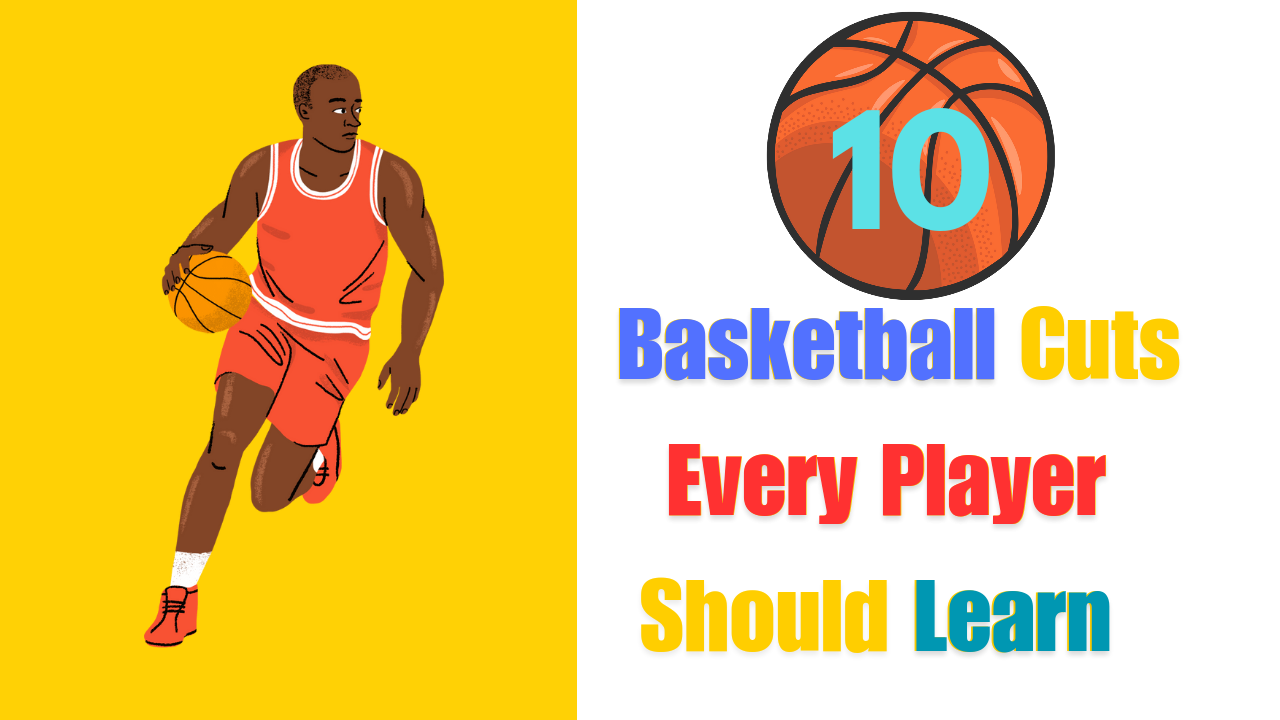Table of Contents
Introduction:
Proper cutting movements are often overlooked in youth basketball programs. Many Players assume that they will naturally develop cutting skills over time, but that’s rarely the case—at least not in a way that consistently gets players open during games. It’s essential for players to learn how to create space and get open without relying on screens, especially in isolation situations.
As player, it’s our job to learn these techniques. Elite players like Reggie Miller and Ray Allen could score 30 points in a game without dribbling, simply by mastering the art of reading defenses and using the right cuts to receive a pass. In this article, I’ll explain the 10 most common basketball cuts.
1. Backdoor Cut
The backdoor cut is useful when the defender is overplaying and trying to block the passing lane. In many offenses, this creates an open space for the offensive player to cut behind the defender. If your defender is denying the pass, a backdoor cut can be a great option.

One challenge with backdoor cuts is that they require precise passing from the player with the ball to result in an easy lay-up. This is why it’s not as commonly used in youth basketball, as many young players may struggle with accurate passing, leading to turnovers.
To make the backdoor cut effective, players need to set up their defender, make a quick change of direction, and explode toward the basket for the pass.
Most Selling And High Rated Basketball on Amazon:
2. L-Cut
L-cuts are an effective way to get open on the perimeter when starting from the block. This cut doesn’t rely on speed but instead on solid footwork and smart body positioning.

To execute the L-cut, guide the defender toward the elbow, position your top foot over theirs, and use a slight nudge to create separation. Then, cut directly out to the wing while signaling for the ball.
3. V-Cut
V-cuts are one of the most common cuts, often used on the perimeter when a player needs to get open for a pass. They involve making contact with the defender and are done by guiding the defender a few feet inside the 3-point line, then quickly changing direction by planting a foot and sprinting back out to catch the ball.

This move works because the defender usually doesn’t have enough time to react and stop the offensive player from receiving the pass.
Everyday Basketball For Indoor and Outdoor Players:
4. Curl Cut

The curl cut is when an offensive player curls tightly around a screen. It requires the player to read the defender’s movement. If the defender follows closely around the screen, the curl cut provides a great opportunity to get open for a lay-up. However, if the defender anticipates the screen and goes over it, the flare cut becomes the better option.
5. Deep Cut
A deep cut requires a player on one side of the court to cut baseline behind everyone and to the opposite side.

This cut is commonly utilised against zone defences since the defence may not see the player cutting if they are preoccupied with the ball or other players.
6. Flare Cut

The curl cut and flare cut complement each other. If the defender anticipates the curl cut and tries to block it, the offensive player should quickly adjust by flaring out to the corner to create space and get open for a pass.
Most Selling Basketball on Amazon:
7. Shallow Cut

When trading positions with the guy dribbling the ball, make a shallow cut. This entails going below them and keeping your defender distracted while they take your position.
8. UCLA Cut

The UCLA cut acquired its name from UCLA’s famed coach, John Wooden.
A player at the top of the key passes to a perimeter player, who then cuts directly to the block off a high post screen. If done well, this cut typically results in an open lay-up for the cutter.
9. Front Cut

The front cut requires you to be on your opponent’s ball side.
Typically, this is accomplished by making a jab step or a tiny cut behind the defence, causing them to retreat. Once they do, cut in front of them, closest to the ball.
10. Flash Cut

A flash cut is a rapid, explosive move performed by a post player into the high post.
Read More About Basketball Positions: Basketball All Positions: Key Roles and Responsibilities (explained)


